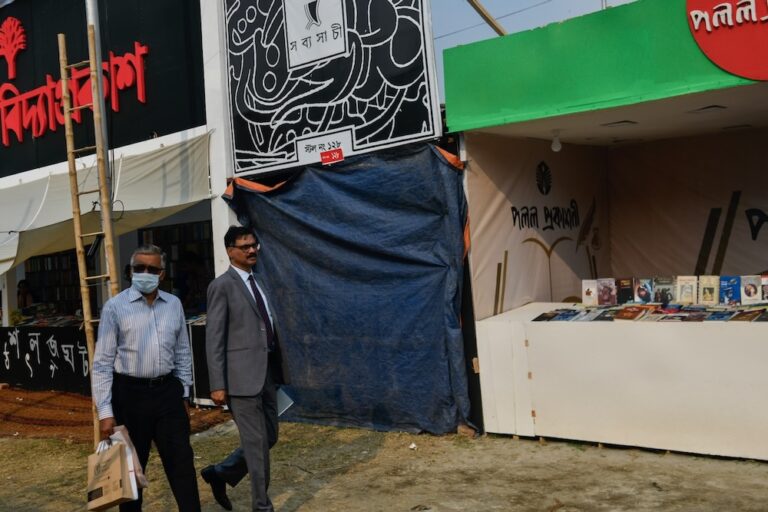RSF calls on the police to investigate the death threats that have been made against Shahidul Alam, a well-known photographer.
(RSF/IFEX) – Reporters Without Borders welcomes the government’s decision to lift a ban on the Drik gallery’s “Crossfire” exhibition about extrajudicial executions by a special police unit.
When the high court convened on 31 March 2010 to hear gallery owner Shahidul Alam’s appeal against the closure, government lawyers announced that the police deployed outside the gallery had been withdrawn and that there would be no further attempt to obstruct the exhibition.
“This is a victory on several fronts, for the Bangladeshi people’s right to know, for the right of the media and artists to speak out, and for the rights of citizens to protest against injustice,” Alam told Reporters Without Borders after the court hearing in Dacca.
“All these rights are very important,” he added. “The fact that the courts have ruled against the government has given new hope to citizens fighting to establish the rule of law.”
At the same time, the press freedom organisation calls on the police to investigate the death threats that have been made against Alam, a well-known photographer.
“The threats against our colleague, Shahidul Alam, are very disturbing and cast doubt on the possibilities of freely debating human rights issues in Bangladesh,” Reporters Without Borders said.
The press freedom organisation added: “The abuses practiced by certain police officers in the course of their efforts to combat crime are a disgrace to the rule of law in Bangladesh. The reporters who expose them play a key role in helping to put a stop to these practices. We urge the government to keep the promises it made before the election to respect human rights.”
The Dakha police closed the Drik gallery on 22 March 2010, just before the opening of the exhibition of photos and displays about extrajudicial executions by members of Bangladesh’s Rapid Action Battalion (RAB). The exhibition is called “Crossfire,” because the police claim that their victims are caught in the crossfire when the police act in legitimate self-defence or to prevent criminals escaping. Human Rights Watch puts the number of people killed by the RAB at around 500.
Even more disturbing are the threats Alam received from individuals claiming to represent the authorities who visited the gallery on 27 and 28 March. On 27 March, a man asked the gallery’s caretaker who Alam was, whether he had a family or children and whether he was not “afraid for his life.”
Before leaving, the man added: “Shahidul will meet his death on the streets. He will be gunned down.” When he returned the next day with another person, the man told a crowd outside: “It’s the organiser of this exhibition they should be shooting.”
One of the gallery’s representatives told Reporters Without Borders: “This is not the first time we have been censored. It happened when we organised an exhibition about Tibet. But this is the first time we have received these death threats and it is very disturbing.”
At least four journalists have been tortured by members of the RAB since 2007.


